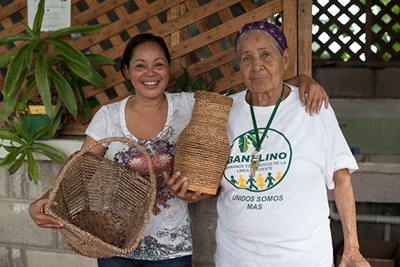SDG 2 – Zero Hunger
Welcome to 2019 and the second year of our series of blog posts about the relationship between Fairtrade and the UN’s Sustainable Development Goals. The image above shows Joanys de Jesus Condeiro, a Fairtrade fruit farmer in Brazil. Photo by Maurice Ressel.
While Zero Hunger is the stated purpose for Goal 2, it is actually far more ambitious as it aims to “End hunger, achieve food security and improved nutrition, and promote sustainable agriculture.”
A new year can mean a new start, so this year we encourage everyone to take action in response to the UN statement “It is time to rethink how we grow, share and consume our food. If done right, agriculture, forestry and fisheries can provide nutritious food for all and generate decent incomes, while supporting people-centered rural development and protecting the environment.”
Those 3 outcomes, which I’ve highlighted, are interconnected with the three pillars of Fairtrade sustainability: economic, social and environmental.

Economic
Fairtrade works with many farmers and workers who have been marginalized by conventional trade, meaning their incomes are often insufficient to provide for their families year-round, with hunger being a factor between harvests. The Fairtrade Minimum Price on many products helps ensure that producers are able to earn a sustainable income from their crops. Many Fairtrade farmers have also been encouraged to grow additional crops on their farms, in compatibility with their main export product, which allows them to earn additional income from local markets. This all helps to generate decent incomes and prevent hunger.
Social

The additional Fairtrade Premium is often invested in farm improvements to improve yield and quality, which also helps to increase incomes. However, it can also be invested in social development projects for the benefit of the entire rural community, including education, housing and healthcare as well as projects which provide additional income for others in the community who may not directly be part of Fairtrade farms.
As an example, here we see Maria Genao, a banana farmer in the Dominican Republic, with her mother who has been taught how to make baskets from banana stalk fibre to earn income of her own. Photo by James Rodriguez.
Environmental
Fairtrade has strict environmental standards which govern the use of harmful chemicals, and ensure worker protection when it is necessary for such products to be used. Many Fairtrade farms are also certified organic, which results in both a healthier environment and an increased Premium for social development.
In 2019 you can help reduce hunger in farming communities by looking for the FAIRTRADE Mark when you shop for coffee, tea, chocolate, sugar, bananas, flowers and many more products.